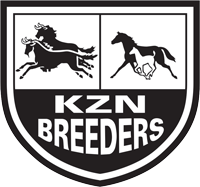|
When Boots, a 5 week-old Quarterhorse colt was examined he displayed contracture of the fetlock joint to the degree where he appeared to knuckle over at the fetlock while the foot collapsed to the inside of his body when he tried to walk. While restrained the limb was extended and the superficial and deep flexor tendons (SDF and DDF) were palpated to determine which structure was most taut causing the contracture. As in many cases of fetlock contracture it appeared that both structures were playing a role.
We determined then that both a superior and inferior check ligament desmotomy should be performed. By incising these structures both the SDF and the DDF would be released to a degree – up to 25% – allowing for more extension of the tendons. Both ligaments are designed to provide additional support for the DDF and SDF tendons in normal anatomical situations – in Boots’ case it was likely that they were constraining the stretch of the tendons.
The superior check ligament desmotomy was performed arthroscopically; a small, rigid endoscopic camera was placed into the carpal canal from the outside of the leg and at its proximal borders the superior check ligament was identified. A sharp blade was introduced into the canal and the fibers of this ligament were transected. A medial approach was used to cut the inferior check ligament.
Once the surgery was complete and Boots had recovered from the anesthesia we applied a heel extension shoe to his foot by gluing a perspex plate cut to size. This was administered as he had developed quite severe pastern laxity when wearing a toe extension initially that had been applied to treat his fetlock contracture.
Then a tension device was placed on the dorsal aspect of his limb down over the fetlock and under his heel. These forces ensured that the pastern was in correct alignment and his fetlock was under a constant extensive force even when he was not bearing weight. A combination of the tension device and the desmotomies allowed Boots’ fetlock to attain a normal anatomic position within 24 hours after surgery.
Most foal and adult limb contractions, angulations and laxities can be fixed very satisfactorily if the correct treatments are applied. A combination of surgical procedures and special devices applied to limbs will allow for the correct anatomical conformation to be achieved.



Bosch Hoek Equine Hospital is a state of the art Equine hospital situated in the beautiful Kwa-Zulu Natal Midlands of South Africa. Our primary goal is to offer clients and their horses world class care and expertise for both surgical and medical conditions with a rehabilitation centre to match.
If you require our services or would like to discuss anything please call one of us on the numbers below:
Dr Helen Tiffin 082 966 9324
Dr John Hodsdon 072 165 7122
Prof Jeremy Hubert 033 234 4312
 Prof Jeremy Hubert Prof Jeremy HubertEquine Veterinarian (BVSc, MS, Dip ACVS) Born in Wales, Jeremy spent his formative years on a family farm in Zimbabwe. After qualifying as a veterinarian in Zimbabwe in 1993, he traveled the United Kingdom and United States practicing veterinary science. In 2000, he obtained his Master’s degree and an equine surgical residency at Louisiana State University, where he remained as a clinical instructor and later Associate Professor of Equine Surgery until 2007. He has more recently spent time assisting as a visiting Professor at Onderstepoort’s surgery department in Pretoria and working at Colorado State University where he obtained his Doctorate in Equine surgery. Jeremy also attends to his cattle farm in Zimbabwe whenever possible. We are delighted to have Jeremy here as our surgeon and as a colleague and look forward to working with him further. A board-certified surgeon, Prof. Hubert provides expertise in lameness and associated orthopedic surgery, upper respiratory tract diseases as well as laparoscopy. |


